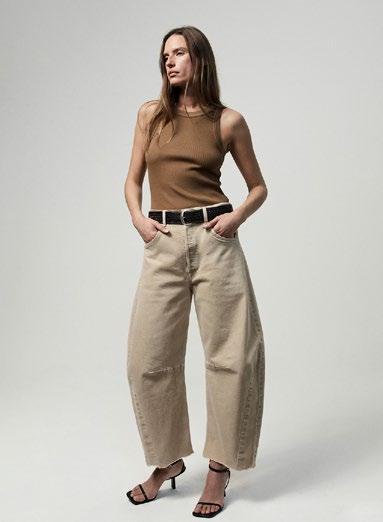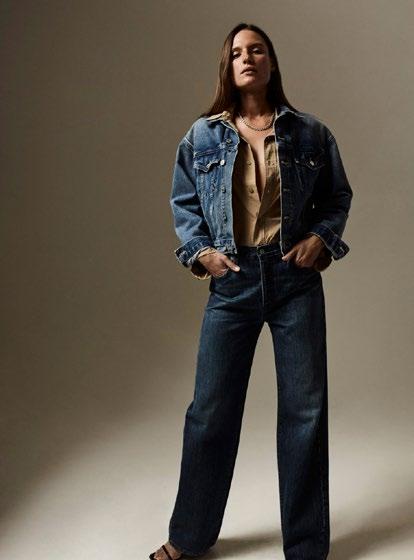
3 minute read
GOOD JEANS
BY VIVIAN WERG
Die blauen Zeiten ändern sich: Galt Denim lange als einer der umweltschädlichsten Stoffe überhaupt, wendet sich nun das Blatt. Immer mehr Labels produzieren ökologischer und ethischer, ohne dass die typische Denim-Coolness leidet.
The blue times, they are a-changing! For a long time, denim was deemed to be one of the most environmentally damaging fabrics of all, but now the tide is turning. More and more labels are changing over to more eco-friendly and ethical production – without compromising the typical coolness of denim.
Die Modebranche ist eine der schmutzigsten Industrien, wenn es um CO2-Emissionen und Abfall geht. Sie nutzt hauptsächlich nicht erneuerbare Ressourcen, etwa Erdöl zur Produktion von Kunstfasern, Baumwolldünger und Chemikalien zum Färben – das sind etwa 98 Millionen Tonnen im Jahr. Ein Viertel aller Kleidungsstücke wird niemals verkauft. Je nachdem, welche Berichte man liest, werden jährlich rund 92 bis 200 Millionen Tonnen Textilien weggeworfen – eine gewaltige Abfallmenge. Nachhaltige Mode spielt dabei eine immer wichtigere Rolle und ist die Zukunft der Modeindustrie.
The fashion industry is one of the dirtiest when it comes to CO2 emissions and waste. It mainly uses non-renewable resources, such as petroleum, to produce synthetic fibers, cotton fertilizer and chemicals for dyeing – around about 98 million tons a year. And a quarter of all garments are never sold! Depending on which reports you read, around 92 to 200 million tons of textiles are thrown away every year – a huge amount of waste. Sustainable fashion is playing an increasingly important role in this and is the future of the fashion industry.
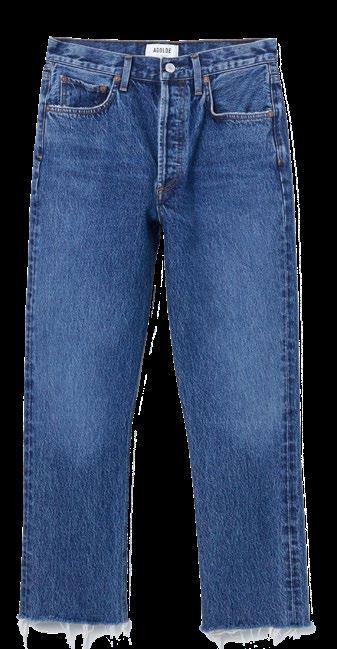
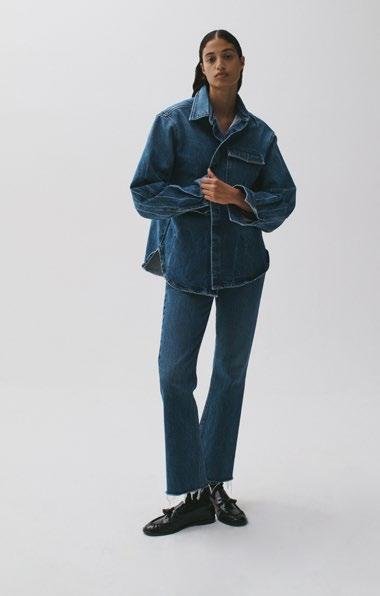

Sustainable Denim Brands
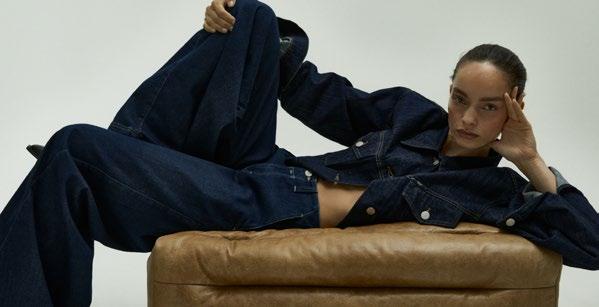


Dass Luxus und Nachhaltigkeit gut zusammenpassen, wissen Designerinnen wie Stella McCartney, Gabriela Hearst und Priya Ahluwalia. Sie vereinen Umwelt- und Stilbewusstsein und beweisen, dass Luxus und Bewusstsein kein Gegensatz, sondern eine Verantwortung ist und, dass Trends nachhaltig sein können, ohne Style opfern zu müssen. Mithilfe ressourcenschonender Designs, langlebiger Wertigkeit, fairer Herstellung, recycelten Stoffen und neuer innovativer Materialien setzen sie Nachhaltigkeitsmaßstäbe, die die Modebranche dazu anregen sollen, einen umweltfreundlicheren Weg einzuschlagen. Auch Denim-Brands wie Citizens of Humanity, Closed und Re/Done versuchen Jeans nachhaltiger und ethischer zu produzieren. Sie verwenden Bio-Baumwolle, recyceln, sparen Energie und Wasser und setzen innovative Technologien ein.
Designers such as Stella McCartney, Gabriela Hearst and Priya Ahluwalia know that luxury and sustainability are highly compatible. These designers combine awareness of the environment with style and demonstrate that luxury and consciousness are no contradiction at all but a duty, and that trends can actually be sustainable without any need to sacrifice style. With the aid of resource-saving designs, long-lasting value, fair manufacturing, recycled fabrics and new innovative materials, they are setting sustainability standards in order to inspire the fashion industry to go down a more environmentally friendly path. Denim brands such as Citizens of Humanity, Closed® and RE/DONE are also trying to make jeans more sustainable and ethical. They use organic cotton, recycle, save energy and water, and employ innovative technologies.
Bei einer Jeans ohne nachhaltigen Ansatz wird schon die Baumwolle mit Pestiziden angebaut, die Jeans mit weiteren Chemikalien gefärbt und anschließend beim Waschen Tausende Liter Wasser verschmutzt. Und obwohl die nicht nachhaltigen Herstellungsprozesse schwerwiegende Auswirkungen auf die Umwelt und die menschliche Gesundheit haben, setzen mehr High-End-Marken als je zuvor auf das beliebte Material. Ob weite, lässige Jeans bei Chloé, mit Schnürdetails wie bei Jacquemus, Cargo-Modelle aus Denim bei Givenchy, Maxiröcke bei Burberry, MM6 oder Alaïa oder Double-Denim Sets bei Chanel – Denim ist der Stoff der Stunde. Das Allrounder-Talent der Mode gehört weltweit zu den am häufigsten getragenen Kleidungsstücken und es ist nicht schwer zu verstehen, warum. Denim sieht mühelos cool aus und ist ewig aktuell. Die von Jacob Davis, einem Schneider, und Levi Strauss, Besitzer eines Stoffgroßhandelshauses in San Francisco, vor rund 150 Jahren patentierte Jeans mit Taschen und robusten Nieten hat sich über die Jahrzehnte von der Arbeiterhose zur Modehose entwickelt.
A pair of jeans manufactured without any sustainable approach uses cotton that’s been grown using pesticides, has been dyed using yet more chemicals, and has polluted thousands of gallons of water during the washing process. And even though the unsustainable manufacturing processes have a serious detrimental impact on the environment and human health, more high-end brands than ever before are turning to the popular material. Whether it’s a matter of wide, casual jeans at Chloé, jeans with lace-up details like at Jacquemus, cargo pants made of denim at Givenchy, maxi skirts at Burberry, MM6 or Alaïa, or double-denim sets at Chanel, denim is the fabric of the moment right now. Fashion’s all-round talent is one of the most worn garments worldwide and it’s not hard to see why. Denim looks effortlessly cool and is always contemporary. Patented by Jacob Davis, a tailor, and Levi Strauss, owner of a wholesale fabric house in San Francisco, some 150 years ago, jeans with pockets and sturdy rivets have evolved over the decades from working-class pants to fashionable trousers.
